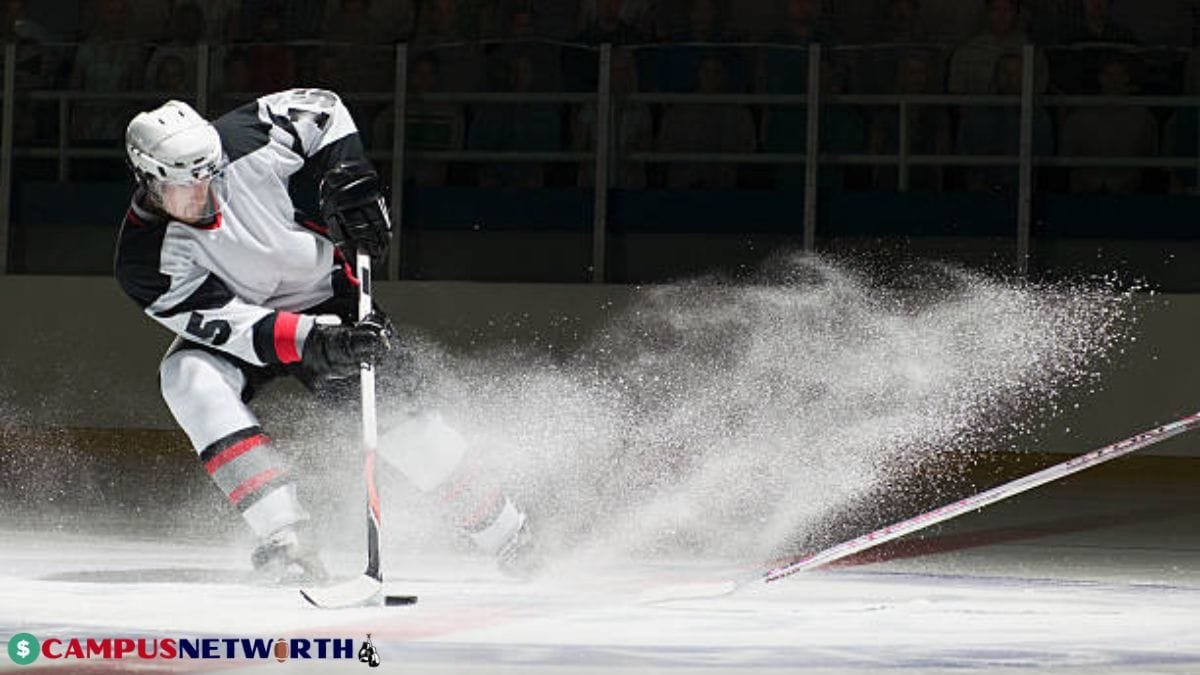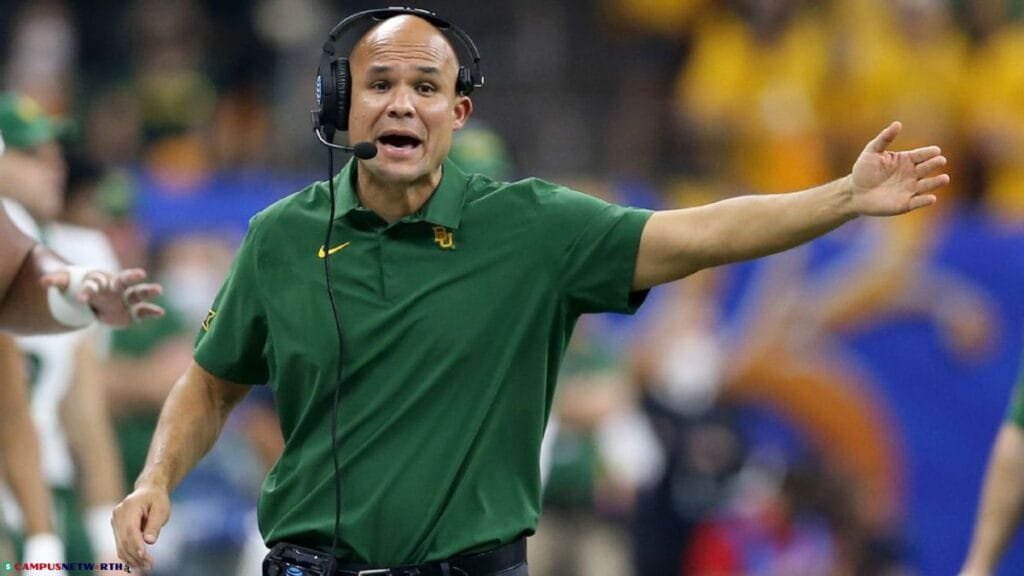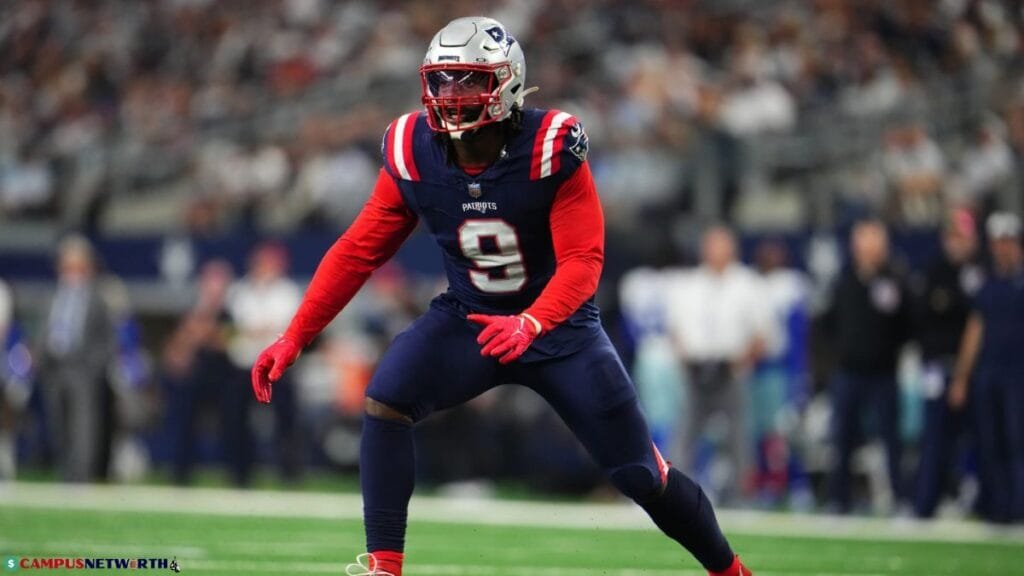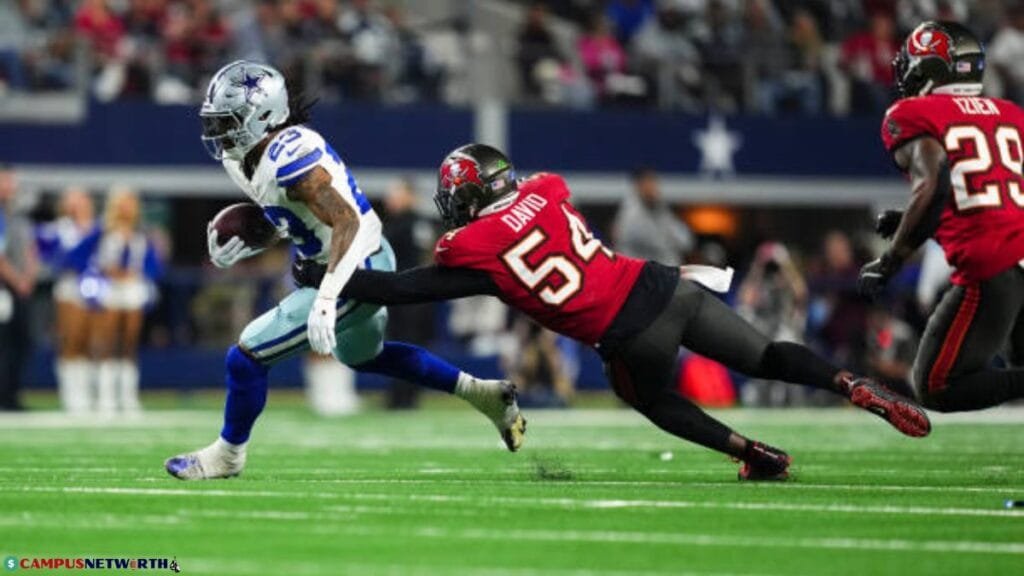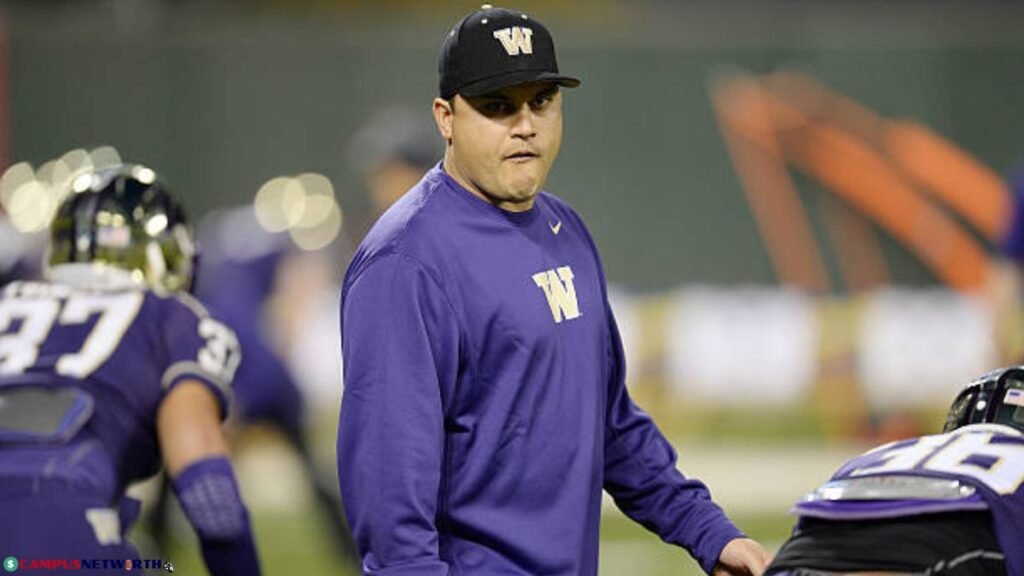Ice hockey is a fast-paced team sport played on ice. It’s known for its speed and skill. This article will dive deep into ice hockey, covering key topics like its definition and history.
We’ll also look at the exciting ice hockey leagues that showcase the sport. Plus, we’ll explore the many benefits of playing ice hockey. It improves physical fitness and mental well-being.
This guide is for both newbies and seasoned fans. It aims to help everyone understand ice hockey better.
Table of Contents
ToggleWhat is Ice Hockey?
Ice hockey is a fast-paced team sport played on ice. It’s known for its quick action and competitive spirit. To understand ice hockey, you need to know about the game’s basics.
This includes how teams work together, the roles of each player, and the game’s strategies.
Understanding the Game
An ice hockey game pits two teams against each other. They try to score by shooting a puck into the other team’s goal. Players use sticks while skating, needing to be agile and precise.
Each game has three periods, each lasting 20 minutes. The clock stops during some breaks, making the game more thrilling and strategic.
Core Elements of Ice Hockey
The key parts of ice hockey are:
- Rink Dimensions: Rinks are 200 feet long and 85 feet wide. This small space makes the game intense.
- Player Dynamics: Each team has six players on the ice, including a goalie. Players switch roles to stay fresh.
- Game Strategies: Knowing the game means understanding strategies like power plays. These happen when a team has an advantage due to a penalty.
- Terminology: Terms like faceoff and offside are important. They help you follow the game and its rules.
Learning these elements helps fans and players enjoy the game more. It makes the experience richer and more exciting.
The Fascinating History of Ice Hockey
The history of ice hockey is a long and exciting journey. It shows how the sport has grown into a favorite game around the world. The early days of ice hockey date back to medieval Europe, where people played games on ice.
Canada was key in making these games into the sport we know today. This happened in the 19th century.
Origins and Development
At first, ice hockey was just simple games on frozen lakes. By the late 1800s, these games started to have rules. This led to the first organized competitions.
The first game of modern ice hockey was in Montreal in 1875. It was the start of leagues and championships to come.
Ice Hockey in the Olympics
Olympic ice hockey began in 1924. It has grown a lot, with teams from many countries competing for gold. The Olympics show off athletes’ skills and bring people together through ice hockey.
Milestones in Ice Hockey History
There are many important moments in ice hockey’s history:
- The Stanley Cup was created in 1893, becoming a famous trophy.
- Professional leagues were formed, changing the sport a lot.
- Top players have set records, showing their skill and athleticism.
- Grassroots efforts have helped grow the sport, engaging youth and communities.
These moments show how rich and exciting ice hockey’s history is. It’s a big part of sports culture worldwide.
Ice Hockey Rules and Regulations
Knowing ice hockey rules is key for players, coaches, and fans. Basic rules help us enjoy the game’s strategy and action. Important parts include player roles, game structure, and infractions.
Basic Rules of the Game
The game’s basic rules are vital. They cover key points like:
- Offsides: A rule broken when an attacker enters the zone before the puck.
- Icing: A rule to stop players from shooting the puck across two red lines without touching it.
- Scoring: The main goal is to score more goals than the other team.
Knowing these rules helps players make better choices on the ice. It boosts their game and team strategy.
Penalties and Infractions
Penalties are key in ice hockey. They shape the game’s flow. Infractions leading to penalties include:
- Tripping: Using a stick or body to trip an opponent.
- Slashing: Aggressively hitting an opponent’s stick with a stick.
- Fighting: Physical fights, strictly penalized.
When penalties are called, players must go to the penalty box. This puts their team at a disadvantage. Knowing penalties is vital for strategy and safety.
The Structure of Ice Hockey Leagues
Ice hockey leagues are key to the sport’s growth. Knowing the league hierarchy is vital for fans and future players. The NHL is the top league, while minor and junior leagues help young players grow.
NHL: The Premier League
The National Hockey League (NHL) is the top level of ice hockey. It features the best players from the U.S. and Canada. Founded in 1917, it has 32 teams competing for the Stanley Cup.
The league has strict rules and a set schedule. This makes the competition fierce. NHL players are seen as top athletes, showing great skill and sportsmanship.
Minor and Junior Leagues
Minor and junior leagues are below the NHL. They are important for developing young talent. Junior hockey leagues are key for players aged 16 to 21.
These leagues help young athletes improve their skills. They can move up to the NHL, helping the sport grow. This cycle of talent helps ice hockey leagues thrive.
Health Benefits of Playing Ice Hockey
Playing ice hockey is great for your health. It boosts both physical fitness and mental well-being. The fast action and need for agility make it a fun way to stay healthy.
Physical Fitness and Endurance
Ice hockey is very intense. It makes your heart stronger and your muscles more toned. Players skate, shoot, and move in ways that raise their heart rates and work different muscles.
These activities improve your heart health, muscle strength, and endurance. Key benefits include:
- Increased aerobic capacity
- Enhanced muscle tone and strength
- Improved coordination and agility
Playing regularly helps keep you fit and can help you stay at a healthy weight. Ice hockey is a great way to stay active.
Mental Health Advantages
Ice hockey also helps your mind. Being part of a team makes players feel connected and happy. This can help improve your mood and reduce feelings of loneliness.
Specific mental health advantages include:
- Enhanced mood regulation
- Reduced anxiety and stress levels
- Improved focus and concentration
Playing ice hockey regularly can help you manage stress. It’s a great way to keep your mind healthy and balanced.
Essential Equipment for Ice Hockey
Ice hockey needs special gear to keep players safe and help them play better. Knowing about different types of equipment is key for all players. It helps them make good choices, no matter their skill level.
Protective Gear
Protective gear is very important in ice hockey. It keeps players safe from getting hurt. Key items include:
- Helmets: They protect the head and must fit well.
- Shoulder Pads: These guard the upper body from hits.
- Elbow Pads: They protect the elbows when falling.
- Shin Guards: These shield the legs from pucks and hits.
It’s important for all players to wear high-quality protective gear. This keeps them safe during games and practice.
Skates and Sticks Explained
Hockey skates are a must-have for ice hockey. They come in different types for all players, from kids to pros. The right fit is key for moving well and controlling the stick on the ice.
- Size: The right size prevents blisters and discomfort.
- Blade Quality: Better materials mean better skating.
Sticks are also very important. They come in various flex ratings, lengths, and curves. Players should think about:
- Flex: Higher flex means more power in shots.
- Curve Patterns: Different curves help with shooting and puck control.
- Material: Composite sticks are often better than wood ones.
Understanding these details helps players pick the right sticks and skates. Good equipment means better safety and performance on the ice.
How to Get Started with Ice Hockey
Starting ice hockey can seem tough for beginners, but it’s also very rewarding. Knowing the first steps and tips can make it easier. It helps build a strong base for new players.
Beginner Tips for New Players
For those starting ice hockey, here are some beginner tips:
- Find a local rink: Knowing nearby rinks is key for practice and lessons.
- Sign up for lessons: Lessons help you learn and improve your skills.
- Focus on skating: Good skating is the base for all ice hockey skills.
- Join a beginner league: Being in a league helps practice teamwork and communication.
Learner’s Ice Hockey Programs
There are many programs for beginners in ice hockey. These programs focus on the basics:
- Puck control: It’s important to learn how to handle the puck well.
- Teamwork: Programs teach players to work together on the ice.
- Skill development: They help players get better at their skills over time.
Joining these programs can help you learn faster. You’ll also meet other fans. These programs are great for learning the sport and making friends.
The Impact of Ice Hockey on Community and Culture
Ice hockey has a big impact on American culture. It brings people together, creating strong bonds. Families and friends gather to watch games, showing pride and support for their teams.
As towns support their teams, a special culture grows. Ice hockey becomes a key part of community life.
Ice Hockey’s Role in American Culture
Ice hockey is deeply woven into American culture. It shows up in many ways:
- Traditions: Local teams become a big part of family traditions. Generations of fans cheer for their favorite teams.
- Identity: Regions take pride in their ice hockey teams. This pride helps shape a community’s identity.
- Events: Big tournaments and championships bring people together. They celebrate and unite diverse groups.
Community Engagement Through Hockey
Hockey programs do more than just improve physical skills. They also make communities more inclusive:
- Youth Leagues: These leagues welcome young athletes from all walks of life. They focus on teamwork and skill.
- Outreach Programs: These programs introduce hockey to more people. They help increase access and participation.
- Charity Events: Teams often play for charity. This raises money for community needs and builds goodwill.
These efforts show how ice hockey impacts society. It makes a positive difference beyond the rink.
Women’s Ice Hockey
Women’s ice hockey has grown a lot in recent years. It has seen big wins and more chances for players. More young athletes are joining because of media coverage.
There are now many programs to help new players. This growth is exciting and shows the sport’s future is bright.
Growth and Development of Women’s Hockey
Women’s hockey is getting more popular. More young girls are playing, thanks to new leagues and programs. This has led to better training and more skilled players.
These skilled players are doing well in big tournaments. This success is making women’s hockey more famous.
Key Organizations Supporting Women’s Ice Hockey
Groups like USA Hockey and the Women’s Sports Foundation are key. They help young players and support athletes. The Professional Women’s Hockey Players Association (PWHPA) fights for fair chances and growth.
These organizations help a lot. They make sure women’s hockey keeps growing. They also inspire the next players.
Ice Hockey Training and Skill Development
Good ice hockey training is key for player skill growth. Young hockey players need to work on specific skills to do well. Drills for different skill levels can improve techniques and boost confidence in players of all ages.
Key Skills Every Player Should Develop
Good ice hockey players have many skills. Some important skills include:
- Skating Agility: Quick turns and fast starts help move better.
- Puck Handling: Getting good at stick control helps in offense.
- Shooting Accuracy: Being precise in shooting boosts scoring chances.
- Defensive Tactics: Knowing how to position and cover helps the team.
Training Techniques and Drills
There are many ways to train and improve skills. Each method has its own purpose:
- On-Ice Drills: Drills like passing and shooting practice focus on game skills.
- Strength Conditioning: Off-ice workouts build strength, improving overall play.
- Video Analysis: Watching game footage helps find areas to get better and see progress.
Using these detailed training methods helps players at all levels. It prepares them for games and ensures they perform their best on the ice.
Major Ice Hockey Events and Tournaments
Ice hockey has exciting events that thrill athletes and fans. Every year, top players come together for intense games. These events make unforgettable memories with their fierce competition.
Both local and international tournaments offer a mix of old rivalries and new challenges. This makes the sport even more thrilling.
Annual Championships and Competitions
The Stanley Cup Playoffs are a big deal in ice hockey. They lead to the NHL champion being crowned. This title is very prestigious.
Other important hockey championships include:
- World Junior Championships
- Women’s World Championships
- National Championships at the college level
These events are key in ice hockey. They help new and experienced players shine.
International Events and Rivalries
International tournaments like the IIHF World Championships and the Winter Olympics are huge. They bring teams from all over the world. This shows off national pride and skill.
These games are filled with passion and intensity. They also highlight long-standing rivalries. This makes the games even more exciting for fans.
Ice Hockey’s Global Reach
Ice hockey is loved all over the world. Countries like Canada and the United States are leaders. But, many other nations are catching up fast.
This growth is thanks to global efforts to spread the sport. More people are playing and watching hockey everywhere.
Ice Hockey in Different Countries
Sweden, Finland, and Russia have strong hockey traditions. They produce top players and exciting leagues. Australia and some European countries are growing their hockey scenes too.
Women’s leagues and youth programs are making hockey more welcoming. This is attracting new fans to the sport.
The Evolution of International Hockey
The IIHF (International Ice Hockey Federation) is key in growing hockey worldwide. It hosts big events like the World Championships and the Olympics. This brings together players from different countries.
It helps players improve and learn from each other. This makes hockey better for everyone around the world.
Conclusion
Ice hockey is more than a game. It shows community spirit and identity. It also highlights physical fitness and teamwork.
The sport gives players and fans a thrilling experience. It also brings people together in local and international communities. This shows how important ice hockey is, beyond just playing.
Ice hockey has a rich history and changing rules. It has grown women’s hockey and sparked international rivalries. It captures the hearts of people worldwide.
This sport is a key way for people to express themselves, compete, and connect. It leaves a mark on future generations.
Looking ahead, ice hockey will keep growing and reaching more people. It improves health, builds friendships, and creates lasting memories. This conclusion shows the value of playing and watching ice hockey.
FAQ
What is ice hockey?
Ice hockey is a fast-paced team sport played on ice. Players skate and use sticks to hit a puck into the opposing team’s goal. It has various positions, strategies, and rules.
What are the health benefits of playing ice hockey?
Ice hockey boosts your heart health, muscle strength, and endurance. It also helps reduce anxiety and builds teamwork and social skills.
How did ice hockey originate?
Ice hockey started in medieval Europe and grew in 19th century Canada. The Stanley Cup was created in 1893.
What are the basic rules of ice hockey?
Ice hockey rules cover offsides, icing, and scoring goals. They also list infractions and penalties that affect game strategy.
What equipment do I need to play ice hockey?
You need protective gear like helmets, shoulder pads, and shin guards. Also, skates and sticks that fit your level and style.
How can I get started with ice hockey?
Start by finding local rinks and signing up for lessons. Practice your skating. Many programs focus on basic skills.
What is the significance of the NHL?
The NHL is the top ice hockey league in the U.S. and Canada. It’s where professional players compete, and it has a strict schedule.
What is the role of women in ice hockey?
Women’s ice hockey is growing, with more opportunities and support. USA Hockey and leagues like PWHPA help female players.
How does ice hockey impact communities?
Ice hockey brings people together, building pride and cultural appreciation. It supports youth leagues and outreach programs.
What key skills are important for ice hockey players?
Key skills include skating, puck handling, shooting, and defense. Training with drills, strength exercises, and video analysis helps improve these skills.
What major ice hockey events should I know about?
Major events include the Stanley Cup Playoffs, World Championships, and Olympics. Also, the NHL draft and All-Star games showcase top talent.
How is ice hockey played internationally?
Ice hockey is played worldwide, with countries like Sweden and Russia having their own cultures. International leagues and competitions promote strategy sharing.

